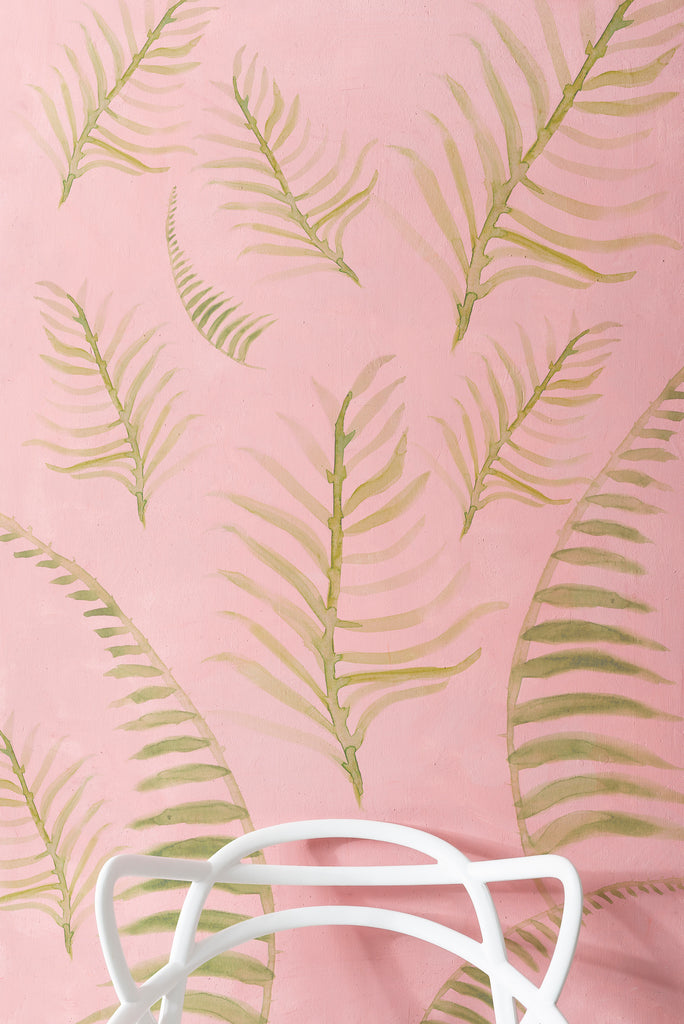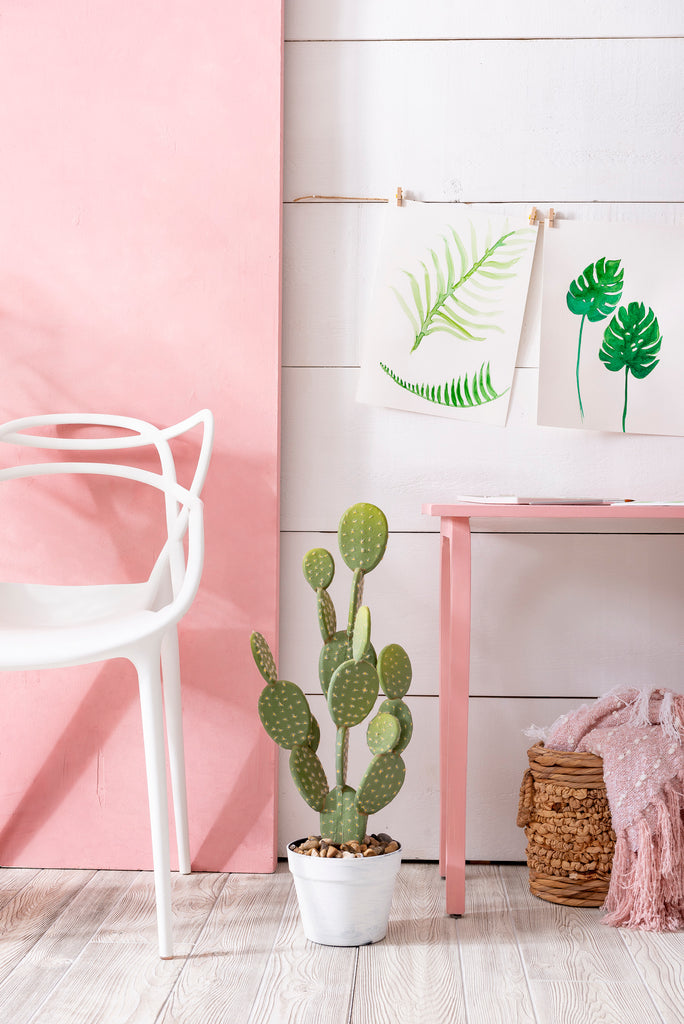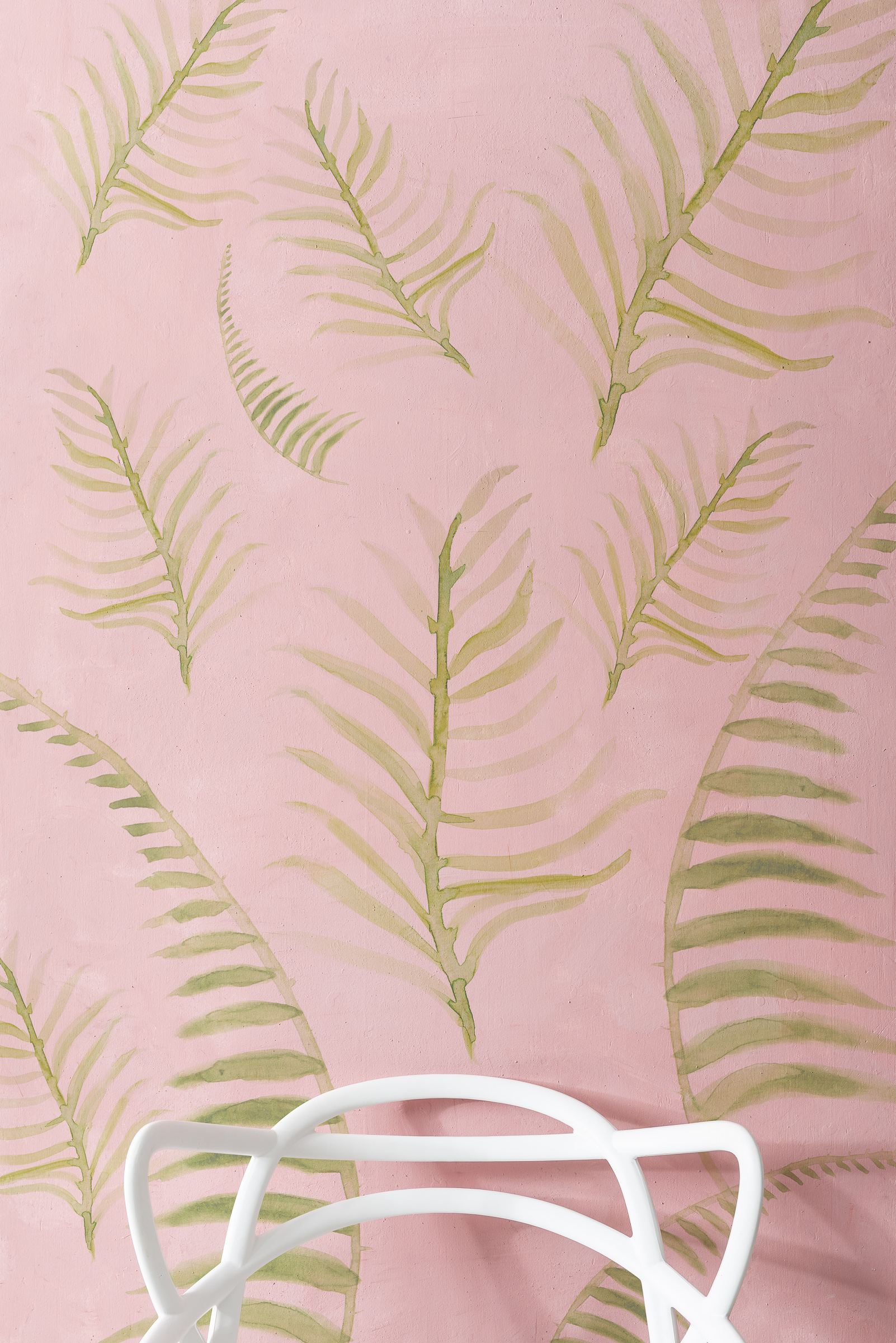Milk Paint gives the most unique-looking finishes for walls that are super easy to achieve! Whether you’re going for an authentic vintage European style or more modern-looking plaster walls with subtle nuances, we will show you how in this blog. In this Painting an Accent Wall with Fusion Blog, we took a modern twist. Think New Mexico meets Palm Springs.
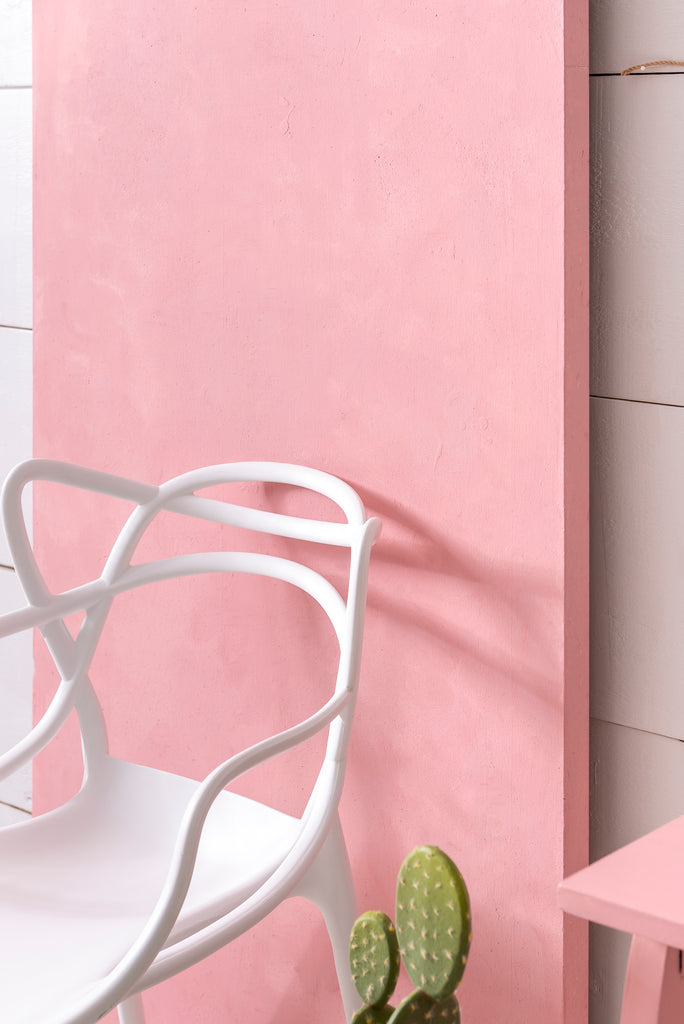
Whether it’s an accent wall, or a full interior room remember the Golden Rule of Milk Paint: Have fun!
Here are some very important questions and tips to help you get the most out of your Milk Painted Walls! 😉
1. Prep – What is currently on the walls?
Are they coated in something glossy? Is there paint peeling or chipping away? You will want to remove any peeling, flaking paint and do any patches that are necessary prior to painting with Milk Paint, however, your walls don’t need to be in perfect condition especially if you’re going for a more rustic look.
De-gloss shiny paints with a light sanding, or add a bonding agent into the Milk Paint for best adhesion. Do a test patch to see if this is necessary.
If painting a wall in a kitchen, there is likely grease on it, be sure to wash with TSP Alternative.
When painting an accent wall with Fusion Milk Paint Always test the milk paint on your surface to see if it will adhere as is, otherwise, you may need to add a bonding agent to guarantee its adhesion on difficult surfaces. It will start to flake and peel off in about 20-30 minutes if it is not going to adhere well. If this happens, add in some bonding agent to increase the adhesion.
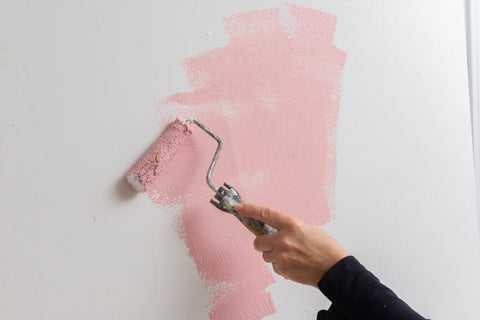
2. What is the best surface?
Milk Paint adheres best to porous surfaces such as bare wood walls or unpainted plaster. However, with proper preparation and the use of a bonding agent, you can apply milk paint to a range of surfaces, including previously painted walls with regular house paint.
3. What will the finish be like?
Milk paint’s natural composition means that any underlying imperfections or discrepancies may become visible. For instance, if a wall has been patched but not sealed with primer, this variation in the surface may show through once it has been painted with milk paint. While some may prioritize the health benefits of using a natural product over slight imperfections, others may prefer a completely seamless finish. In this case, it may be worth considering using Fusion Mineral Paint as an alternative.
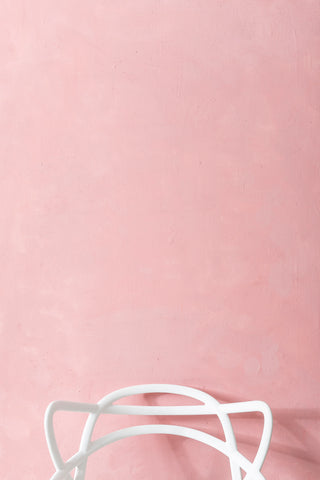
Drywall Application
When applying Milk Paint directly to the surface of unpainted unprimed drywall, you will often see a difference where the drywall has a mud coat. For an even application, it is best to apply your first coat using Bonding Agent.
4. Is it easy to apply?
Yes, it is very easy to apply with either a brush or a roller depending on the effect you are going for. Brushing back and forth will add texture and variation which can look amazing. If you want more of a flawless look, try a roller.
Mix your Milk Paint to achieve your desired look. Start with 1 part powder to 1 part water and adjust from there.
If you want more of a textured finish, we recommend mixing it a little thicker and chunky, and don’t smooth it out so much. We mixed roughly 1 part water with two parts Palm Springs Pink Fusion Milk Paint Powder for this wall.
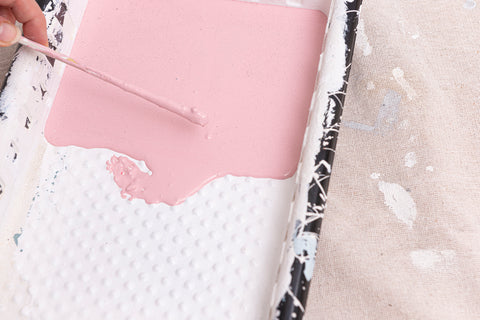
If you want a wash effect, just mix the paint with more water, if you want an opaque effect, mix it with more paint powder. There should be no clumps, lumps, streaks of pigment etc. If so, then you need to revisit how you’re mixing the paint.
Watch this video on how to mix Milk Paint
5. Will the colour be consistent?
Different batches of paint may result in varying colours, so it is crucial to purchase sufficient paint to complete the project and have some extra in case of unexpected situations. When painting a wall, ensure that you have mixed enough paint to complete at least one full wall to guarantee consistency in the colour. Mixing the same shade a second time may result in slight colour variations.
6. Do I need to seal it with something?
That is completely up to you. If you leave it unsealed, your milk paint colour will be more muted and chalky looking- quite stunning! If you want to reveal the true colour and have it pop. then add a top coat such as wax or hemp oil. Keep in mind it will be difficult to remove these finishes should you wish to re-paint in the future.
If you leave it unsealed, there is a potential for watermarks, should your walls come into contact with water. Ceilings or low-traffic walls can easily be left unsealed as long as you like the colour as is. Remember you can always just re-paint it in the future to freshen up the look.
A simple, thin coat can be applied with a roller or rag. Make sure to wipe away the excess and you’re finished!
7. What if my paint finish crackled?
Sometimes if milk paint is applied too thickly, or there was something on the surface resisting the paint, it may crackle here and there. This can be a very interesting and fun look for the old-world effect. You may gently sand and re-paint this area if it is a cause for concern.
Always test your methods and process prior to tackling a large project.
Here’s an overview of how we achieved this look with Palm Springs Pink Milk Paint by Fusion.

Painting an Accent Wall with Fusion Milk Paint is easy! Apply with a roller or a brush. A roller for larger surfaces will make the job go faster. If you want a patterned texture, we recommend trying to different application tools. We then rolled the paint on the accent wall in all different directions with a microfibre roller. We wanted more of a textured wall.
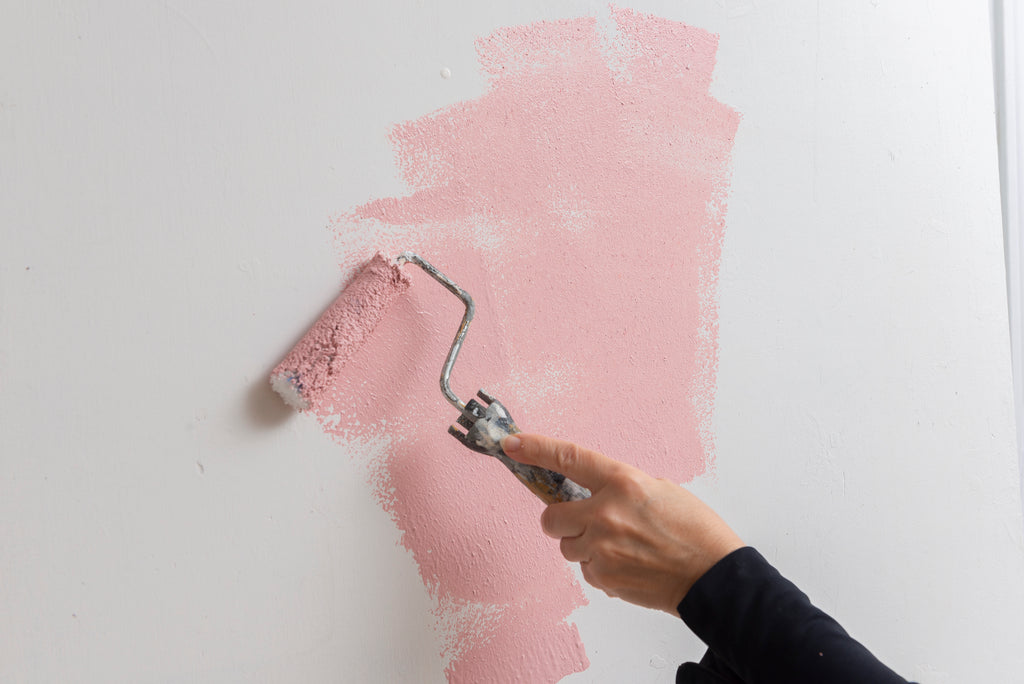

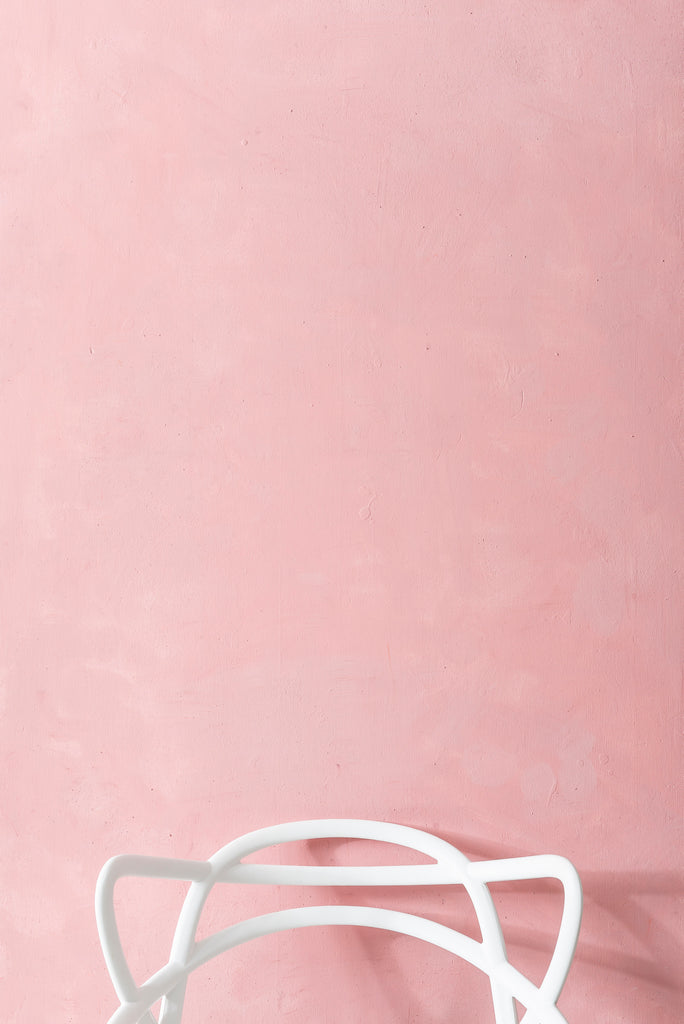
You don’t have to stop there though! Don’t be afraid to liven your walls up a bit more with some complimentary stencils, they can really make that finishing touch extra special.
